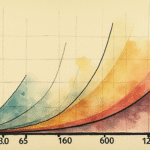Introduction
Building a successful and widely recognized product in the minds of millions of consumers requires not only attractive personalities but also a long-term consistency strategy. This is the path that the Leagues Cup, contested by Liga MX and MLS, must follow to establish itself as a top-tier tournament in both Mexico and the United States, according to former soccer players Miguel Layún and DaMarcus Beasley.
The Importance of Consistency and Growth
“Though still a young tournament, it’s great that it’s backed by CONCACAF and recognized by FIFA. To become a significant product in 15 years, it’s crucial to focus on both economic and sporting rewards,” emphasizes Layún.
“Both leagues are still searching for rules that work for fans, teams, and players. It’s still growing, thinking about improvements, and I believe this year is the best so far, as it now includes 18 teams from MLS and Liga MX,” adds Beasley.
Leagues Cup: A Growing Competition
The summer saw the third edition of the Leagues Cup, featuring 36 participants or more. It is part of a series of tournaments linking Liga MX and MLS since 2018, which also includes the Campeones Cup, All-Star Game, and Skills Challenge.
Rivalry and Stability
The soccer rivalry between Mexico and the United States has existed for decades due to national team encounters, but it is gradually shifting to the club level through various competitions.
The Campeones Cup was born in 2018, pitting the reigning champions of Liga MX and MLS in a single match. The Leagues Cup emerged in 2019 with eight competitors (four from each league); currently, all Liga MX teams and 18 MLS teams participate. The most recent event between the two nations was the All-Star Game, which includes the Skills Challenge starting in 2021.
The Leagues Cup holds greater significance due to its format: it involves the entire roster of Liga MX teams and lasts about a month. Its estimated economic prize pool is $40 million, allowing its top three competitors to qualify for the following year’s CONCACAF Champions Cup.
Starting in 2025, the Leagues Cup will have new rules: each team is guaranteed three matches against opponents from the other country in the first round, and quarterfinal tickets will be evenly distributed between Liga MX (4) and MLS (4).
“The format has improved for the better. The main goal was to balance team participation somewhat. This format will offer more excitement by ensuring at least some stage features matchups between both leagues, which is what we’re most interested in. It will be interesting to see how it works, understanding that it’s a young league that will continue to seek improvements year after year,” Layún reflects.
For the former América captain, one of the main attractions is that it awards spots in the CONCACAF Champions Cup, which in turn grants access to the FIFA Club World Cup, also modified this summer to include more games and audience.
“It’s clear that there’s an effort to renew football worldwide. The FIFA Club World Cup this summer was a great success. In that sense, I believe the Leagues Cup is heading in the right direction,” Layún concludes.
Cross-Learning Opportunities
The relationship between Mexico and the United States in soccer extends beyond these tournaments. Recently, American investors have invested in clubs like Necaxa, Cancún FC, and Querétaro.
This opens the door for exchanging practices in administrative, managerial, communication, and other areas.
“I admire MLS’s marketing and communications strategy. I’ve always believed that the US is a master at this. After all, soccer is an entertainment product. We focus on results, but it was born as entertainment, and we’ve somewhat lost sight of that, failing to create fan experiences, which I believe MLS does exceptionally well,” Layún comments.
When asked about what Liga MX could learn from MLS and vice versa, Layún highlights centralizing assets such as broadcasting rights, content, apparel, and more.
Beasley, on the other hand, suggests that MLS should abandon having three franchise players per team, allowing for better salaries for more players with potential.
The American adds that, from his perspective, Liga MX remains above MLS due to the recent high-profile signings in Mexico, such as Sergio Ramos, James Rodríguez, and Keylor Navas.
“I’ve always thought that Liga MX is slightly better than MLS just because of the players coming to Mexico. MLS is still growing each year, with things both on and off the field like communications, television, sponsors, etc., but in my opinion, Liga MX is a bit ahead,” Beasley states.
Key Questions and Answers
- What is the Leagues Cup? The Leagues Cup is a soccer tournament contested by teams from Mexico’s Liga MX and Major League Soccer (MLS) in the United States.
- Why is consistency important for the Leagues Cup? Consistency is crucial for the Leagues Cup to become a top-tier tournament, as it requires long-term strategies for economic and sporting rewards.
- What are the new rules for the Leagues Cup starting in 2025? Each team will have guaranteed matches against opponents from the other league in the first round, and quarterfinal tickets will be evenly distributed between Liga MX (4) and MLS (4).
- What can Liga MX learn from MLS, and vice versa? Both leagues can benefit from exchanging practices in areas such as marketing, communications, administration, and centralizing assets like broadcasting rights and content.
- How do Miguel Layún and DaMarcus Beasley view the current state of Liga MX and MLS? Both former players acknowledge the growth of both leagues, with Liga MX slightly ahead due to high-profile signings and MLS’s improving off-field aspects.






